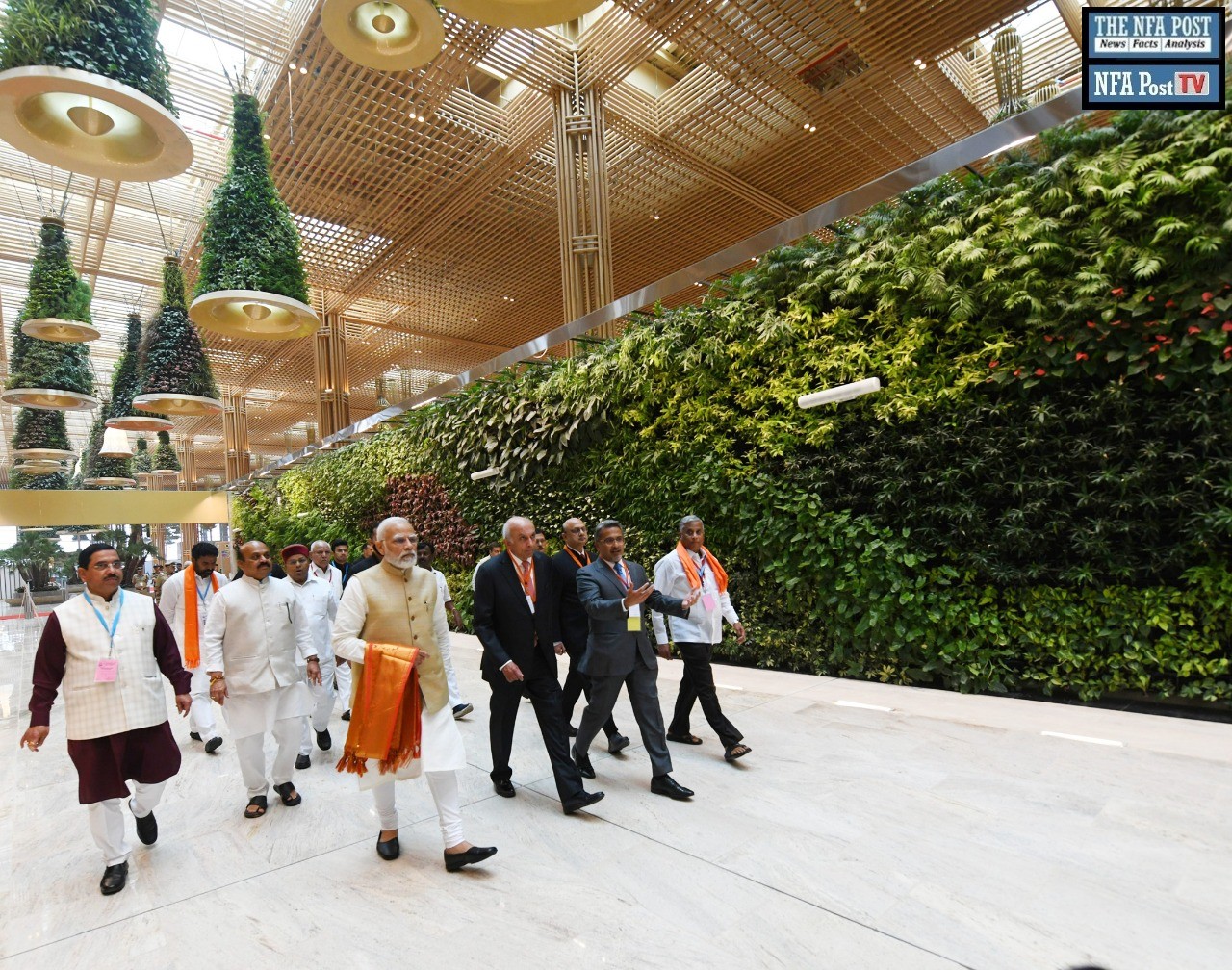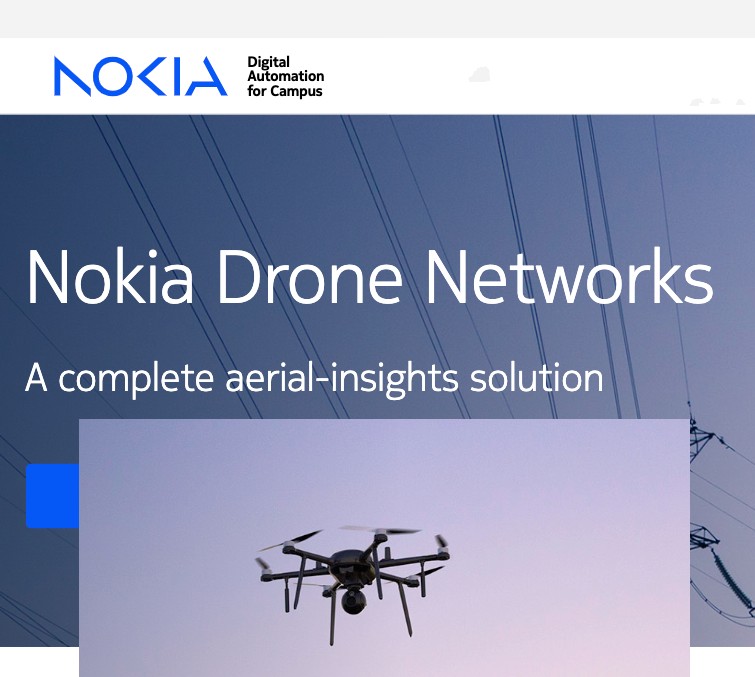Bengaluru, NFAPost: Prime Minister of India Narendra Modi inaugurated Terminal 2 (T2) at the The Kempegowda International Airport Bengaluru’s (BLR Airport) in Benglauru on Friday.
The Prime Minister also interacted with airport authorities where he was briefed on the model of the Terminal 2 building. The Prime Minister also inspected the facilities at the experience centre and took a walkthrough of Terminal 2 of the Kempegowda International Airport. The Prime Minister also witnessed a short film about Terminal 2.
Commenting on the inauguration of Termial 2 via a Tweet, Prime Minister Narendra Modi said Terminal 2 of the Kempegowda International Airport, Bengaluru will add capacity and further convenience.
“It is a part of our efforts aimed at providing top class infrastructure to our urban centres. The Terminal is beautiful and passenger friendly! Glad to have inaugurated it,” said Prime Minister Narendra Modi.
Terminal 2 of Kempegowda International Airport in Bengaluru is built at a cost of around Rs. 5000 crores. The terminal will double the passenger handling capacity of the airport to 5-6 crore passengers per annum, from the current capacity of about 2.5 crores.
Terminal 2 is designed as a tribute to the Garden city of Bengaluru and the passenger experience is meant to be a “walk in the garden”. Passengers will travel through 10,000+ square metres of green walls, hanging gardens and outdoor gardens.
The Airport has already established a benchmark in sustainability with 100% usage of renewable energy across the campus. Terminal 2 has been created with sustainability principles woven into the design. Based on the sustainability initiatives, Terminal 2 will be the largest terminal in the world to be pre-certified platinum rating by US GBC (green building council) prior to commencing operations.
The inaugural event was also attended by the Karnataka Governor Thawar Chand Gehlot, Karnataka Chief Minister Basavaraj Bommai, Union Parliamentary Affairs, Coal and Mines Minister Pralhad Joshi, Former Karnataka Chief Minister B S Yediyurappa, and Karnataka Minister of Housing & Infrastructure Development V Somanna. The much-awaited launch of T2 was hosted by Bangalore International Airport Limited (BIAL), the operator of BLR Airport.
The much-awaited launch of T2 was hosted by Bangalore International Airport Limited (BIAL), the operator of BLR Airport. Fairfax Financial Holdings Limited Chairman and CEO Prem Watsa said the opening of Kempegowda International Airport’s Terminal 2 is a historic moment for Indian.
“The last two years were the most challenging with the pandemic impacting businesses all over the world, but our work on completing T2 was constantly in progress. Bengaluru is an evolving and emerging city that’s always been in the news for its achievements, and it was our aspiration to build a world-class terminal,” said Fairfax Financial Holdings Limited Chairman and CEO Prem Watsa.
He said the aviation sector is recovering from the slowdown due to the pandemic, and inaugurated T2 at the right time.
“While we were on this journey to build something that would be truly outstanding, we were also supported constantly by the government, particularly a government that welcomes business. And whenever business is welcomed, more business makes its way, and we are optimistic that with the opening of T2, we are collaborating with more enterprises and partners, and we are grateful to the government that has believed in our vision and supported us constantly,” said Fairfax Financial Holdings Limited Chairman and CEO Prem Watsa.
Bangalore International Airport Limited (BIAL) MD and CEO Hari Marar said with the launch of T2 BLR Airport has expanded its capacity to cater to additional 25 million passengers every year.
“What makes T2 more special is not just its scale and size, but also the fact that it’s inspired by Bengaluru city. Built as a terminal in a garden, T2 reflects all that Bengaluru stands for – a green, modern, innovative, sustainable, and culturally rich city. Over the last 14 years, BLR Airport has evolved as the Gateway to South India and with this next phase of expansion, it aims to position the airport as the new Gateway to India,” said Bangalore International Airport Limited (BIAL) MD and CEO Hari Marar.
T2, the new 255,661 square meter terminal is a dedication to the beautiful city of Bengaluru. The new terminal is located on the northeastern side of Terminal 1 and is designed by New York-based architectural firm SOM.
Architectural facets
The scale of T2 and the insightful design provides passengers with an experience unlike any other. With 90 counters, T2 aims to ensure faster check-ins, and the security check areas are equally easy to navigate. The two-level domestic and international retail and lounge areas are structured to provide scenic views of the greenery within and outside the building.
The L-shaped piers accommodate 19 boarding gates (for Code C equivalent aircraft) that are pulled away from the main complex providing ample room for movement. The terminal interiors are clad in engineered bamboo inspired by traditional Indian cane weaving, and this gives the terminal a contemporary yet classic look and feel.
The four pillars
The four guiding principles that have influenced the design and architecture of T2 are – terminal in a garden, sustainability, technology, and art & culture.
Terminal 2 is designed as a tribute to the Garden city of Bengaluru and the passenger experience is meant to be a “walk in the garden”. Passengers will travel through 10,000+ sq mt of green walls, hanging gardens and outdoor gardens and these gardens are made in India using indigenous technology.
BLR Airport has already established a benchmark in sustainability with 100% usage of renewable energy across the campus. Terminal 2 is created with sustainability principles woven into the design. With such innovations, Terminal 2 has established several benchmarks. Based on the sustainability initiatives, Terminal 2 is recognised as the largest terminal in the world to be pre-certified with a Platinum LEED rating by USGBC (US Green Building Council) prior to commencing operations.
‘
The principle of technology and innovation is integral to the terminal, demonstrated through the seamless passenger journey using Digi Yatra. Several integrated technology features power the terminal to keep it customer-centric, operationally efficient, and innovative.
A terminal is a place where we find all human emotions on display. To express this, ‘Naurasa’ is the theme that unites all the commissioned artworks for Terminal 2. The artworks are exhibited at strategic locations and serve as beacons in a traveller’s journey, allowing passengers to pause, reflect and enjoy. The artworks represent the heritage and culture of Karnataka and broader Indian ethos. 60 artworks by 43 artists were selected from over 300 open entries.
All these facets give T2 a special status as a terminal that is modern yet rooted in culture, and an airport that offers a memorable ‘destination’ experience to all travellers.
Terminal in a garden
T2 is a first-of-its-kind ‘Terminal in a Garden’ and gives BLR Airport the status of being the ideal extension of Bengaluru city’s green aesthetics. The terminal and the area leading up to it are designed to give passengers an experience of walking in a garden. Right from the entry into the BLR Airport campus from the Main Access Road (MAR) to entering T2 and then boarding aircraft at the piers, passengers will be visually treated with all shades of greens.
From 10,235 sqm of green walls around the terminal, hanging gardens that cascade down from the terminal roof on the bronze veils and bells suspended from the ceiling, and the green lagoons within the premises to the extensive forest belt area between the terminal and boarding piers, passengers will experience greenery like never before.
A total of 620 endemic plants, 3,600+ plant species, 150 palm species, 7,700 transplanted trees, 100 varieties of lilies, 96 lotus species and 180 rare, endangered and threatened species and 10 ecological habitats make up the lush green landscape at the BLR Airport, around T2. The garden around the terminal maintains a microclimate that is two to three degrees lower than its surroundings. The flora and fauna, and skylight filtered through the delicate lattices of bamboo, and indoor waterfalls inspired by the waterways of Karnataka – everything provides for a sensorial and rich transit for both departing and arriving passengers.
Sustainability
While the interiors made of bamboo and lush gardens contribute to the beauty of the terminal, these are also essential components contributing to the sustainability pillar of T2. The engineered bamboos used for the first time in India, are fire retardant and long-lasting, while the gardens and forest cover naturally cleanse the air.
Solar panels and daylight harvesting results in overall 24.9% energy savings. Rainwater harvesting, six major rainwater-fed ponds with 413 million litres of water to cater to the airport’s requirements, and multipurpose lagoons where pollutants are cleaned naturally – all these are an integral part of the long-term sustainability plan.
Enhanced indoor air quality strategies like entryway systems and interior cross-contamination prevention, treated reverse osmosis (RO) water used for heating, ventilation, and air conditioning systems, further strengthen BLR Airport’s sustainability practices. These sustainable practices were identified even before the launch and T2 has been pre-certified with the Platinum LEED rating by USGBC (US Green Building Council), prior to the commencement of operations. Going forward the upcoming integrated solid waste management plant will convert biodegradable waste to fuel and manure, leading BLR airport towards zero waste to landfill.
Innovation and technology
One of the key driving forces behind T2 is innovation and technology that’s been applied rationally to make passenger experience simplified, seamless and effortless. From entry into the airport until boarding the craft, passengers can experience an easy check-in process, faster security check and convenient boarding. Apart from the self-baggage drop and Digi Yatra, several technological innovations are being executed for an easy passenger journey.
Digi Yatra remains one of the smartest and easiest processes that has enhanced passenger journeys. With the ‘your face is your boarding pass’ technology, travellers can pass through security checks without any hassles. The face of a passenger today has become the single biometric token, and BLR Airport has been at the forefront of developing this smart security implementation to facilitate more accurate screening and higher passenger throughput since 2017. BLR Airport supported the Government of India to roll out phase 1 successfully on August 15, 2022.
With such innovative practices and advanced technology measures, T2 aims to maintain BLR Airport’s promise of making passenger journeys easy and memorable.
Art & Culture
T2 aims to be a visual delight to all passengers with its insightfully curated art and décor elements that are part of its Art Programme. The art team of BLR Airport has curated the programme based on two themes – Karnataka’s rich heritage and culture, and Bharata’s Natayshastra’s Naurasa or nine emotions. Sixty artworks capture these two themes.
From Krishnaraj Chonat’s copper sculpture suspended at the boarding piers, Gaatha and MA Rauf’s Bidri wall art, and Dhaatu and Anupama Hosker’s wood puppets that are suspended from the ceiling near the boarding gates, to leather puppets by Foley Design and Gunduraju, the artworks at T2 promise to be awe-inspiring and will make passengers’ journey through the terminal an unforgettable experience.
However, the focus of the Art Programme at T2 is to exhibit the cultural diversity and unique art forms of Karnataka in particular, followed by other South Indian art forms. 43 artists from Karnataka and across India were commissioned to create these 60 art pieces that have the ability to make passengers pause, observe, introspect and feel rejuvenated.
T2 is designed to provide the highest level of passenger experience while also making it an unforgettable destination for passengers with its memorable visual impressions, sustainable practices, and technology.





